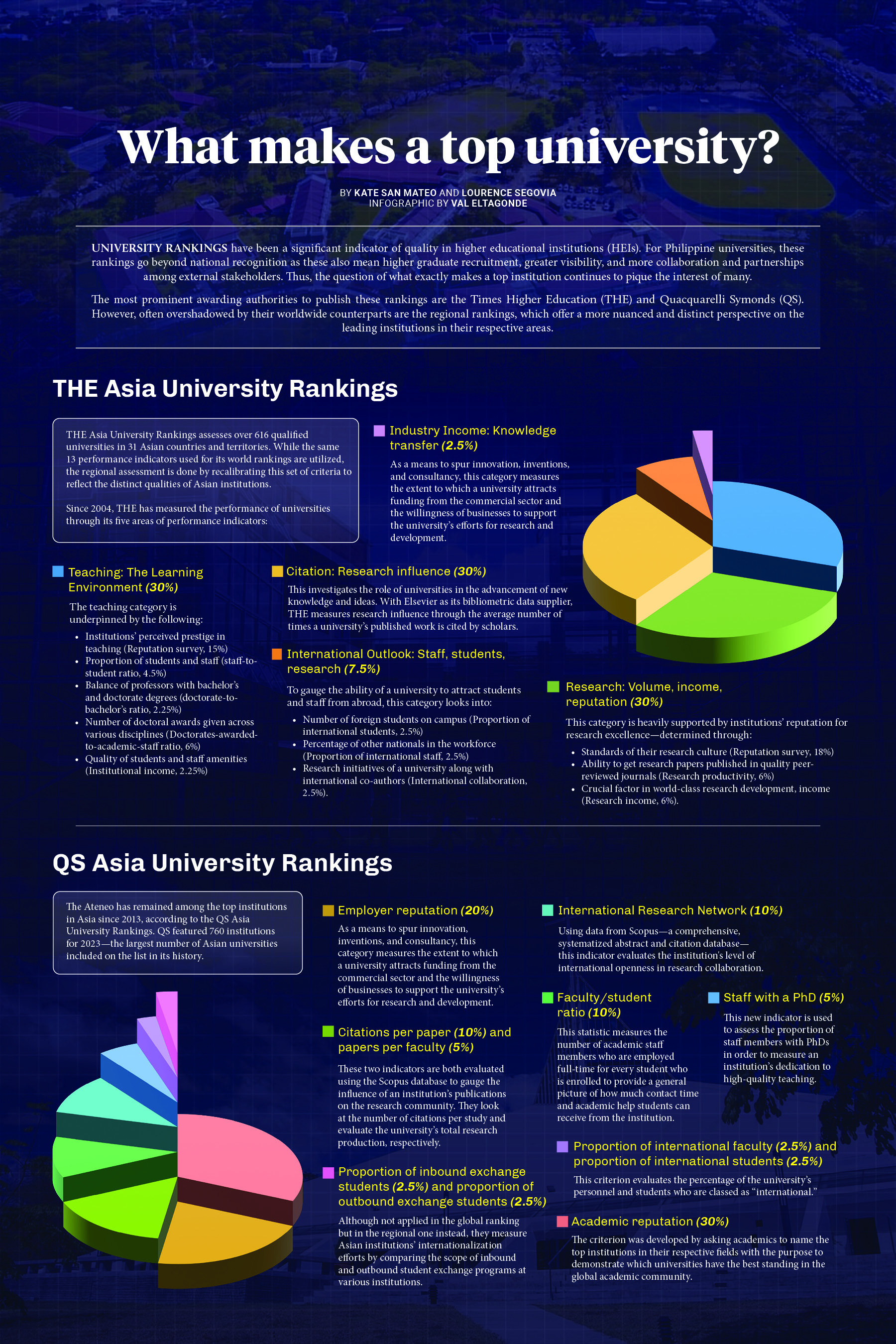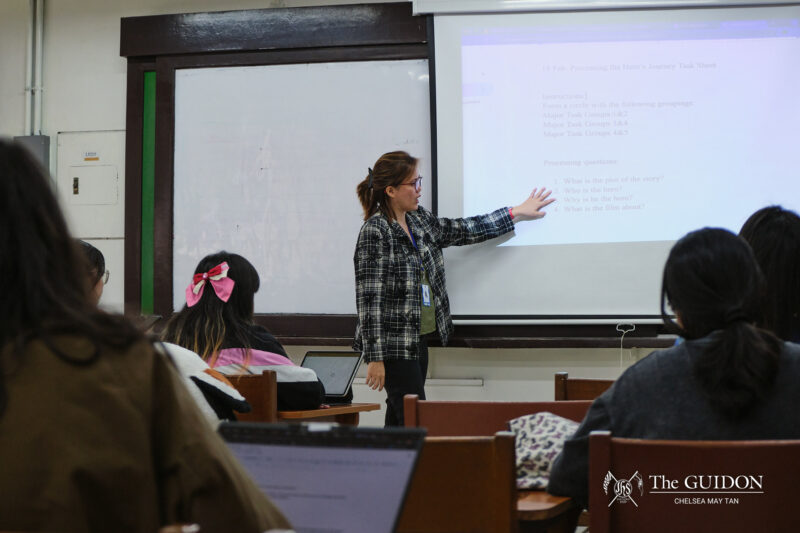UNIVERSITY RANKINGS have been a significant indicator of quality in higher educational institutions (HEIs). For Philippine universities, these rankings go beyond national recognition as these also mean higher graduate recruitment, greater visibility, and more collaboration and partnerships among external stakeholders. Thus, the question of what exactly makes a top institution continues to pique the interest of many.
The most prominent awarding authorities to publish world and regional rankings are:
- Times Higher Education (THE)
- Quacquarelli Symonds (QS)
However, often overshadowed by their worldwide counterparts are the regional rankings, which offer a more nuanced and distinct perspective on the leading institutions in their respective areas.
THE Asia University Rankings
THE Asia University Rankings assesses over 616 qualified universities in 31 Asian countries and territories. While the same 13 performance indicators used for its world rankings are utilized, the regional assessment is done by recalibrating this set of criteria to reflect the distinct qualities of Asian institutions.
Since 2004, THE has measured the performance of universities through its five areas of performance indicators:
- Teaching: The learning environment (30%)
The teaching category is underpinned by the following:
- Institutions’ perceived prestige in teaching (Reputation survey, 15%)
- Proportion of students and staff (staff-to-student ratio, 4.5%)
- Balance of professors with bachelor’s and doctorate degrees (doctorate-to-bachelor’s ratio, 2.25%)
- Number of doctoral awards given across various disciplines (Doctorates-awarded-to-academic-staff ratio, 6%)
- Quality of students and staff amenities (Institutional income, 2.25%)
- Research: Volume, income, reputation (30%)
This category is heavily supported by institutions’ reputation for research excellence—determined through:
- Standards of their research culture (Reputation survey, 18%)
- Ability to get research papers published in quality peer-reviewed journals (Research productivity, 6%)
- Crucial factor in world-class research development, income (Research income, 6%).
- Citation: Research influence (30%)
This investigates the role of universities in the advancement of new knowledge and ideas. With Elsevier as its bibliometric data supplier, THE measures research influence through the average number of times a university’s published work is cited by scholars.
- International Outlook: Staff, students, research (7.5%)
To gauge the ability of a university to attract students and staff from abroad, this category looks into:
- Number of foreign students on campus (Proportion of international students, 2.5%)
- Percentage of other nationals in the workforce (Proportion of international staff, 2.5%)
- Research initiatives of a university along with international co-authors (International collaboration, 2.5%).
- Industry Income: Knowledge transfer (2.5%)
As a means to spur innovation, inventions, and consultancy, this category measures the extent to which a university attracts funding from the commercial sector and the willingness of businesses to support the university’s efforts for research and development.
QS Asia University Rankings
The Ateneo has remained among the top institutions in Asia since 2013, according to the QS Asia University Rankings. QS featured 760 institutions for 2023—the largest number of Asian universities included on the list in its history.
- Academic reputation (30%)
The criterion was developed by asking academics to name the top institutions in their respective fields with the purpose to demonstrate which universities have the best standing in the global academic community.
- Employer reputation (20%)
The result of this survey is to inform other QS projects about the importance of employability and career prospects for university applications. This is evaluated by asking graduate employers to name the HEIs they believe produce the highest-quality graduates.
- Faculty/student ratio (10%)
This statistic measures the number of academic staff members who are employed full-time for every student who is enrolled to provide a general picture of how much contact time and academic help students can receive from the institution.
- International research network (10%)
Using data from Scopus—a comprehensive, systematized abstract and citation database—this indicator evaluates the institution’s level of international openness in research collaboration.
- Citations per paper (10%) and papers per faculty (5%)
These two indicators are both evaluated using the Scopus database to gauge the influence of an institution’s publications on the research community. They look at the number of citations per study and evaluate the university’s total research production, respectively.
- Staff with a PhD (5%)
This new indicator is used to assess the proportion of staff members with PhDs in order to measure an institution’s dedication to high-quality teaching.
- Proportion of international faculty (2.5%) and proportion of international students (2.5%)
This criterion evaluates the percentage of the university’s personnel and students who are classed as “international.”
- Proportion of inbound exchange students (2.5%) and proportion of outbound exchange students (2.5%)
Although not applied in the global ranking but in the regional one instead, they measure Asian institutions’ internationalization efforts by comparing the scope of inbound and outbound student exchange programs at various institutions.







